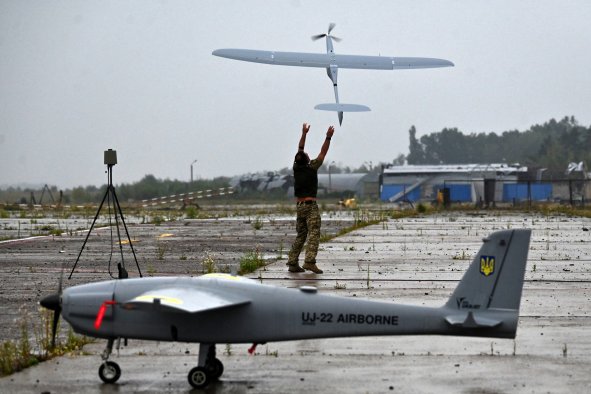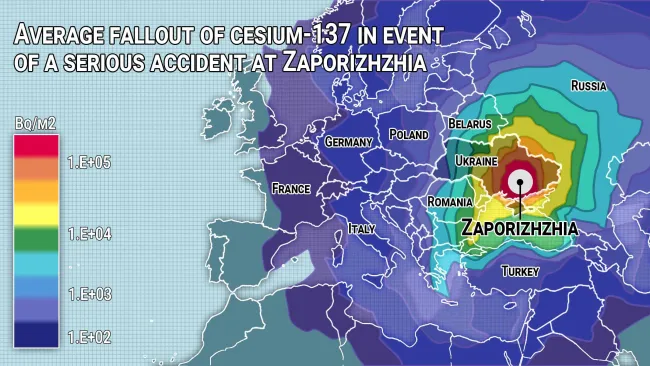A U.S. Navy destroyer encountered Chinese navy ships on a Western Pacific patrol last month, Newsweek has learned, in a sign that China's forces were regularly operating further from its shores.
The 9,700-ton USS Rafael Peralta interacted with Chinese naval vessels while on deployment, U.S. Seventh Fleet spokesperson Cdr. Megan Greene told Newsweek in an emailed response. The interactions were "safe and professional," she said.
U.S. destroyer hints at encounter with Russia, China near GuamRead more U.S. destroyer hints at encounter with Russia, China near GuamThe American warship—armed with up to 96 missiles and a main gun—is one of nine Arleigh Burke-class ships in Destroyer Squadron 15 forward-deployed to Japan. The squadron, the Navy's largest, is the Seventh Fleet's principal surface force in the Western Pacific and Indian Oceans.
In a Facebook post earlier this month, the Peralta was shown returning to Yokosuka naval base following a summer patrol. The warship's official page said it "protected Guam during Chinese and Russian deployments in the area," but the reference was later removed.
"While forward deployed, our U.S. Navy forces regularly interact with foreign militaries at sea," said Greene. She did not specify whether the encounter happened near Guam and did not mention any Russian vessels.
"Guam is U.S. homeland territory and a strategic outpost in the Western Pacific that is critical to maintaining deterrence and stability in the region. The U.S. 7th Fleet remains committed to the protection and defense of Guam and the American citizens who live there," Greene said.
Confirmation of the encounter at sea came shortly after China and quasi-ally Russia concluded a two-week joint naval patrol last month, their fourth such maneuvers together. They did not disclose the exact route of the patrol but said it covered parts of the Western and Northern Pacific Ocean—over 4,800 nautical miles.
Neither China nor Russia mentioned any approach near Guam, but the distance suggested they could have reached the waters of the U.S.'s westernmost point and territory.
Guam is home to three major bases used by the Air Force, Navy and Marine Corps. It is 1,500-1,700 miles from Taiwan and the contested waters of the East and South China Seas, making it an ideal staging area for American military power projection.
China and Russia "are authorized in accordance with customary international law to conduct operations in international airspace and international waters," Greene said. "At no point in time were any activities deemed to pose a threat to the U.S. or our partners or allies."
Liu Pengyu, a spokesperson for the Chinese Embassy in Washington, D.C., told Newsweek in an emailed response: "The Asia-Pacific is a highland for peaceful development, not an arena for geopolitical games. China is a cooperation partner of all countries, not a challenge to any."
"The United States should stop using unfounded threats as an excuse to continue to advance forward military deployment in the Asia-Pacific and provoke confrontation," Liu said.
Last month, the Peralta's Facebook page showed the warship reloading one of its vertical launching system cells at a pier. Greene told Newsweek that the destroyer conducted an expeditionary reload in Saipan in the Northern Mariana Islands last month during deployment.
"Capabilities like this add agility and resilience to our forward-deployed forces, enabling them to maintain warfighting advantage, adapt to new threats, and ultimately prevail in any conflict or contingency if called upon," she explained.
U.S. surface warships—such as cruisers and destroyers—can reload missiles at piers with approved infrastructure only. The Navy plans to introduce rearm-at-sea capability to address missile depletion during a possible conflict with China in the Pacific.
Last month, the Navy successfully conducted the first-ever land-based demonstration of the "game-changing" Transferable Rearming Mechanism, or TRAM, a system that will enable surface combatants to reload missile canisters into their vertical launching systems at sea.
Disclaimer: The copyright of this article belongs to the original author. Reposting this article is solely for the purpose of information dissemination and does not constitute any investment advice. If there is any infringement, please contact us immediately. We will make corrections or deletions as necessary. Thank you.



